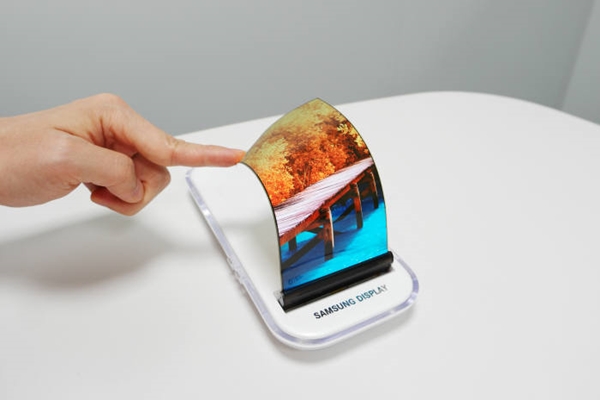Samsung Display has started investing into flexible OLEDs for second half of this year, and related industries estimate that Samsung Display will make total of $8.69 billion (10 trillion KRW) in investments until end of next year.
According to an industry on the 30th, Samsung Display is currently mediating schedules with major equipment providers for its investments in second half of this year. Although clear amount of investments is not known yet, it seems that it will order about similar amount of equipment from first half since production capabilities of major front-end equipment providers are in similar situation.
Industries estimate that Samsung Display’s size of investment in first half of this year can produce 60,000 to 75,000 6th generation substrates per month and that it will make additional investments until next year so that it can produce 100,000 to 200,000 substrates per month. These values include amount of flexible OLEDs that will be used for variety of small and medium IT devices such as tablets, laptops, monitors and others as well as Smartphones.
It is heard that amount of flexible OLEDs that Samsung Display is supplying to Apple will produce 105,000 to 120,000 substrates per month and it is estimated that amount of flexible OLEDs that Samsung Display is supplying to South Korean and foreign set manufacturers including Samsung Electronics is half of what it is supplying to Apple and up to 100,000.
Industries are making careful estimations that Samsung Display’s investment will exceed $8.69 billion by end of next year and reach up to $13 billion (15 trillion KRW). As it is making additional investments with A3 line, which is producing flexible OLEDs, at the center, available space is quickly decreasing. It is at a point where it needs new production lines fast.

Samsung Display is planning to stop operation of L7-1, which is producing 7th generation LCDs, at the end of this year and convert it to OLED lines. If current facilities are used, Samsung Display can minimize time and money that are needed to construct new facilities. From a perspective of a business that needs enormous amount of investments, there isn’t much reason to maintain 7th generation LCD that has low production efficiency.
Starting with phase 2 of investments in first half of this year, Samsung Display went through total of 5 phases and made investments in flexible OLEDs that can produce 60,000 to 75,000 substrates per month. It seems that Samsung Display will increase its production capability by going through 8 phases and up to 11 phases by end of next year.
As Samsung Display is aggressively investing into flexible OLEDs and as Chinese panel manufacturers have recently prepared their investments, major equipment providers are lacking labors. Canon Tokki, which supplies organic depositor, which is a major equipment, has decided to increase its production facilities by two times. Coherent, which supplies laser source, has also decided to invest into its biggest facility investments in company’s history. It is going to invest $45 million and start operating its new line in second half of this year.
South Korea’s equipment, part, and material providers are also responding to investments made into flexible OLEDs. AP System, SFA, Tera Semicon Co., Ltd., HB Technology, Youngwoo DSP Co., Ltd., SKC Kolon PI, and Duksan Neolux are receiving attentions in stock markets for possibility of their high growth.
It is also predicted that there is a high chance that Samsung Display might be the only business that will supply early supply of flexible OLEDs to Apple because Japanese and Chinese panel manufacturers as well as LG Display have yet to secure large production facilities.
“It is rare that Apple receives supplies from a single supplier.” said one representative. “Because there is a chance that Samsung Display will secure facilities that can mass-produce foldable displays for foldable Smartphones, it will lead global OLED markets until next year.”
Staff Reporter Bae, Okjin | withok@etnews.com